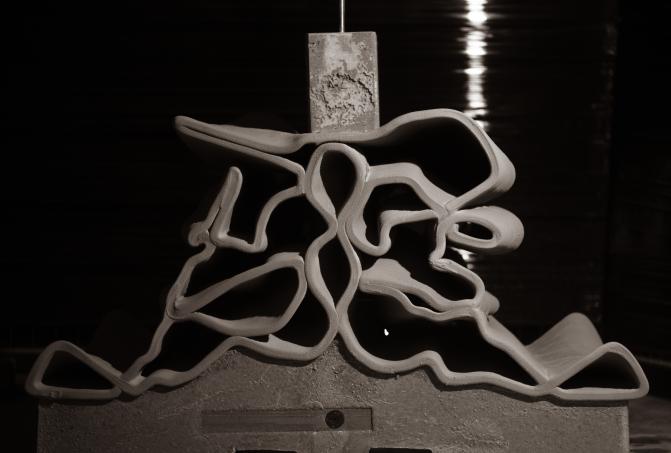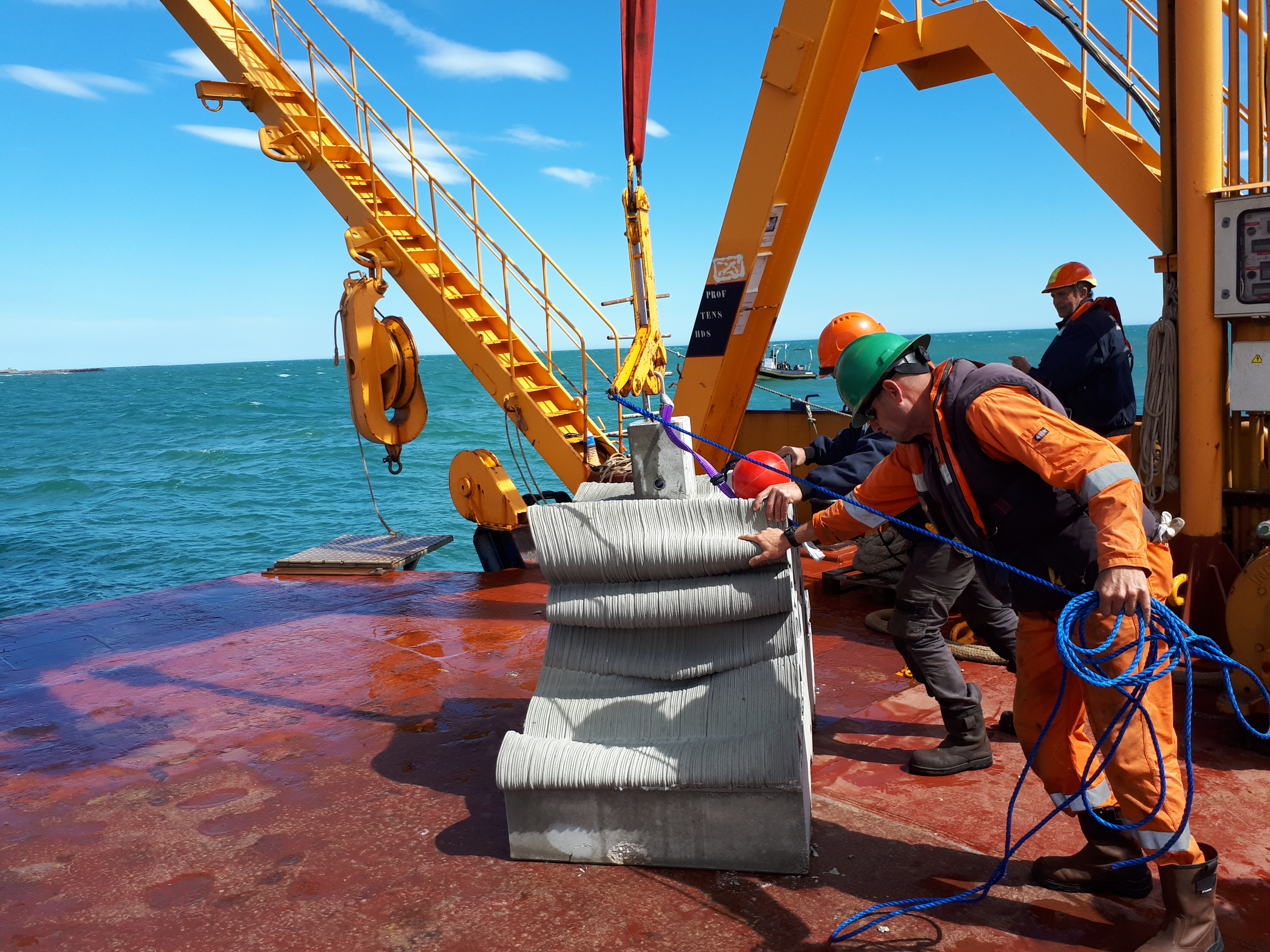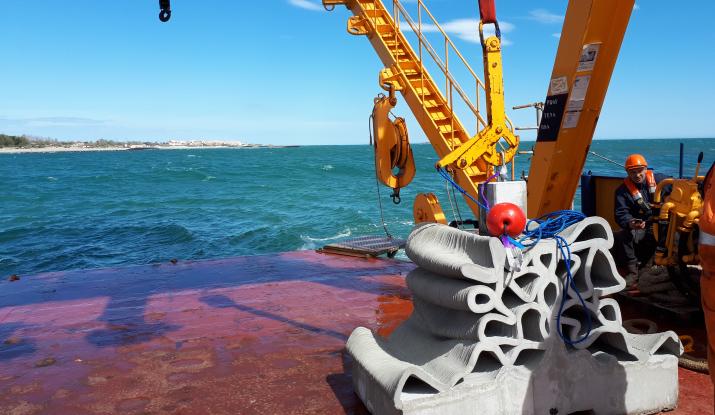Vicat’s concrete 3D ink buoys up marine biodiversity
Thirty-two biomimetic artificial reef modules designed jointly by Seaboost and XtreeE and 3D-printed with Vicat’s concrete ink were submerged just off the coast near the town of Agde, on the Mediterranean, on 27 and 28 May, 2019. They serve to cordon off the foreshore and provide a new habitat for local marine species.

The Récif’Lab project is a forward-looking investment program coordinated by the Municipality of Agde, on France’s Mediterranean coast, for developing the inshore and adding new ecological functionalities in a fragile maritime zone classified as a protected Natura 2000 site. The actions carried out include the manufacture of thirty-two 3D-printed concrete artificial reef modules. This operation is unique by its size and is a world first.
These new structures will anchor surface marker buoys signaling the 300‑m prohibition distance from the shore. They replace traditional marker-buoy anchors made with concrete-filled tires and rusty chains. Designed by Seaboost, under a partnership with XtreeE, this solution reduces the management and maintenance costs of the beach-marker system.
The main purpose of this operation was to demonstrate a sustainable ecological solution. Apart from their anchor function, the submerged 3D reef modules, each weighing in at 1.4 tons, form a truly ecological ‘barrier reef’ serving not only as refuges but also as nurseries for the marine ecosystem. Their biomimetic design inspired by natural coral reefs presents a multitude of cavities of different sizes that are perfectly adapted to the flora and fauna of the Mediterranean coastline.
The Vicat 3D ink solution and the innovative 3D printing technology of XtreeE enabled reef units to be produced easily in large numbers. The concrete 3D ink developed through the technical expertise of our specialist teams is extruded by a robot, layer by layer, to obtain the required shapes. Great care is taken over the special mix design to ensure that the ink’s strength gain and rheology are suited to the printing process.


Coupled with the Vicat ink solution, the know-how and 3D printing technicity of our partner XtreeE meant Seaboost’s technical and environmental imperatives for the project were satisfied. Such good results with such a large volume of marine habitat would have been impossible with traditional methods.
Faced with climate change and the need to preserve local biodiversity, 3D printing with concrete ink can now be seen as a solution with great ecological potential.
Vicat is happy and proud to have contributed—alongside our innovative partners Seaboost and XtreeE, each an expert in its field—to this exemplary environmental project for the city of Agde.
With the support of: France’s Ministry for the Environment; Environmental and Energy Management Agency; Occitanie / Pyrénées-Méditerranée Regional Authority; Rhône Méditerranée Corsica Water Board




